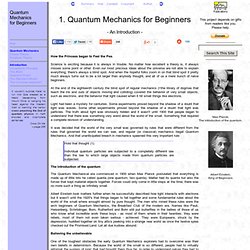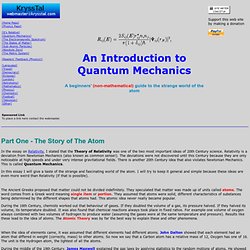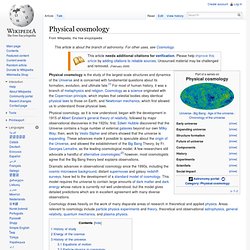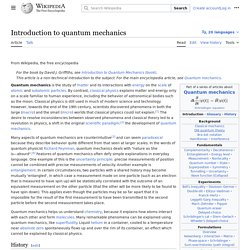

Physics Flash Animations. We have been increasingly using Flash animations for illustrating Physics content.

This page provides access to those animations which may be of general interest. The animations will appear in a separate window. The animations are sorted by category, and the file size of each animation is included in the listing. Also included is the minimum version of the Flash player that is required; the player is available free from The categories are: In addition, I have prepared a small tutorial in using Flash to do Physics animations. LInks to versions of these animations in other languages, other links, and license information appear towards the bottom of this page.
The Animations There are 99 animations listed below. Other Languages and Links These animations have been translated into Catalan, Spanish and Basque: En aquest enllaç podeu trobar la versió al català de les animacions Flash de Física. Many animations have been translated into Greek by Vangelis Koltsakis. Short entertaining videos of quantum mechanics for beginners - Science & Mathematics - Objectivist Living. Short entertaining videos of quantum mechanics for beginners There are a lot of Objectivists who discuss quantum physics on forums, but show that they know very little about the subject.

I admit that I have been one for some time, although I have tried to keep my observations to questions or parts of philosophy I know. What is quantum theory? - Definition from WhatIs.com. Quantum theory is the theoretical basis of modern physics that explains the nature and behavior of matter and energy on the atomic and subatomic level.

The nature and behavior of matter and energy at that level is sometimes referred to as quantum physics and quantum mechanics. In 1900, physicist Max Planck presented his quantum theory to the German Physical Society. Planck had sought to discover the reason that radiation from a glowing body changes in color from red, to orange, and, finally, to blue as its temperature rises. Quantum Mechanics for Beginners; a fun-filled Introduction. How the Princess began to Feel the Pea.

Science is exciting because it is always in trouble. No matter how excellent a theory is, it always misses some point or other. Even our most precious ideas about the universe are not able to explain everything; there's always a blind spot. And when the hopeful folks zoom in on that blind spot it pretty much always turns out to be a lot larger than anybody thought, and all of us a mere bunch of naive beginners. What is Quantum Physics. An Introduction to Quantum Mechanics. In the essay on Relativity, I stated that the Theory of Relativity was one of the two most important ideas of 20th Century science.

Relativity is a deviation from Newtonian Mechanics (also known as common sense!). The deviations were not discovered until this Century because they are only noticeable at high speeds and under very intense gravitational fields. There is another 20th Century idea that also violates Newtonian Mechanics. Physical cosmology. Physical cosmology is the study of the largest-scale structures and dynamics of the Universe and is concerned with fundamental questions about its formation, evolution, and ultimate fate.[1] For most of human history, it was a branch of metaphysics and religion.

Cosmology as a science originated with the Copernican principle, which implies that celestial bodies obey identical physical laws to those on Earth, and Newtonian mechanics, which first allowed us to understand those physical laws. Physical cosmology, as it is now understood, began with the development in 1915 of Albert Einstein's general theory of relativity, followed by major observational discoveries in the 1920s: first, Edwin Hubble discovered that the Universe contains a huge number of external galaxies beyond our own Milky Way; then, work by Vesto Slipher and others showed that the universe is expanding.
Classics - A Nerd’s Guide to Reading. Zero-point energy. Zero-point energy, also called quantum vacuum zero-point energy, is the lowest possible energy that a quantum mechanical physical system may have; it is the energy of its ground state.

All quantum mechanical systems undergo fluctuations even in their ground state and have an associated zero-point energy, a consequence of their wave-like nature. The uncertainty principle requires every physical system to have a zero-point energy greater than the minimum of its classical potential well. This results in motion even at absolute zero. For example, liquid helium does not freeze under atmospheric pressure at any temperature because of its zero-point energy. History[edit] In 1900, Max Planck derived the formula for the energy of a single energy radiator, e.g., a vibrating atomic unit:[5] where is Planck's constant, is the frequency, k is Boltzmann's constant, and T is the absolute temperature.
According to this expression, an atomic system at absolute zero retains an energy of ½hν. Varieties[edit] . Basics of Quantum Mechanics for Dummies. Spooky, bizarre and mind-boggling are all understatements when it comes to quantum physics.

Things in the subatomic world of quantum mechanics defy all logic of our macroscopic world. Particles can actually tunnel through walls, appear out of thin air and disappear, stay entangled and choose to behave like waves. String Theory - featuring Bugs Funny and Chaffy Duck. "Christ!

" yelled Bugs Funny, munching on a flaming orange carrot, "what do they expect me to do next, stretch myself thinner into a string and wind myself into a loop? " I could understand Bugs' trepidation - the studio had really been giving him a hard time for the past few months. While stretching himself thinner was not a complete impossibility, what with him being a composition of penwork, I really had my doubts if the results would look too good. Aloud, though, I said, "It wouldn't really be a bad idea, Bugs. " He looked at me in horror. "Ah well, it would've been good publicity for you, though. "What was that again? " Bugs looked positively hurt that there was something which Chaffy Duck knew but he did not. "Ain't got the joke yet, Doc. I sighed. Introduction to quantum mechanics. Many aspects of quantum mechanics are counterintuitive[3] and can seem paradoxical, because they describe behavior quite different from that seen at larger length scales.

In the words of quantum physicist Richard Feynman, quantum mechanics deals with "nature as She is – absurd".[4] For example, the uncertainty principle of quantum mechanics means that the more closely one pins down one measurement (such as the position of a particle), the less accurate another measurement pertaining to the same particle (such as its momentum) must become. The first quantum theory: Max Planck and black-body radiation[edit] Hot metalwork. The yellow-orange glow is the visible part of the thermal radiation emitted due to the high temperature. Everything else in the picture is glowing with thermal radiation as well, but less brightly and at longer wavelengths than the human eye can detect. Predictions of the amount of thermal radiation of different frequencies emitted by a body.